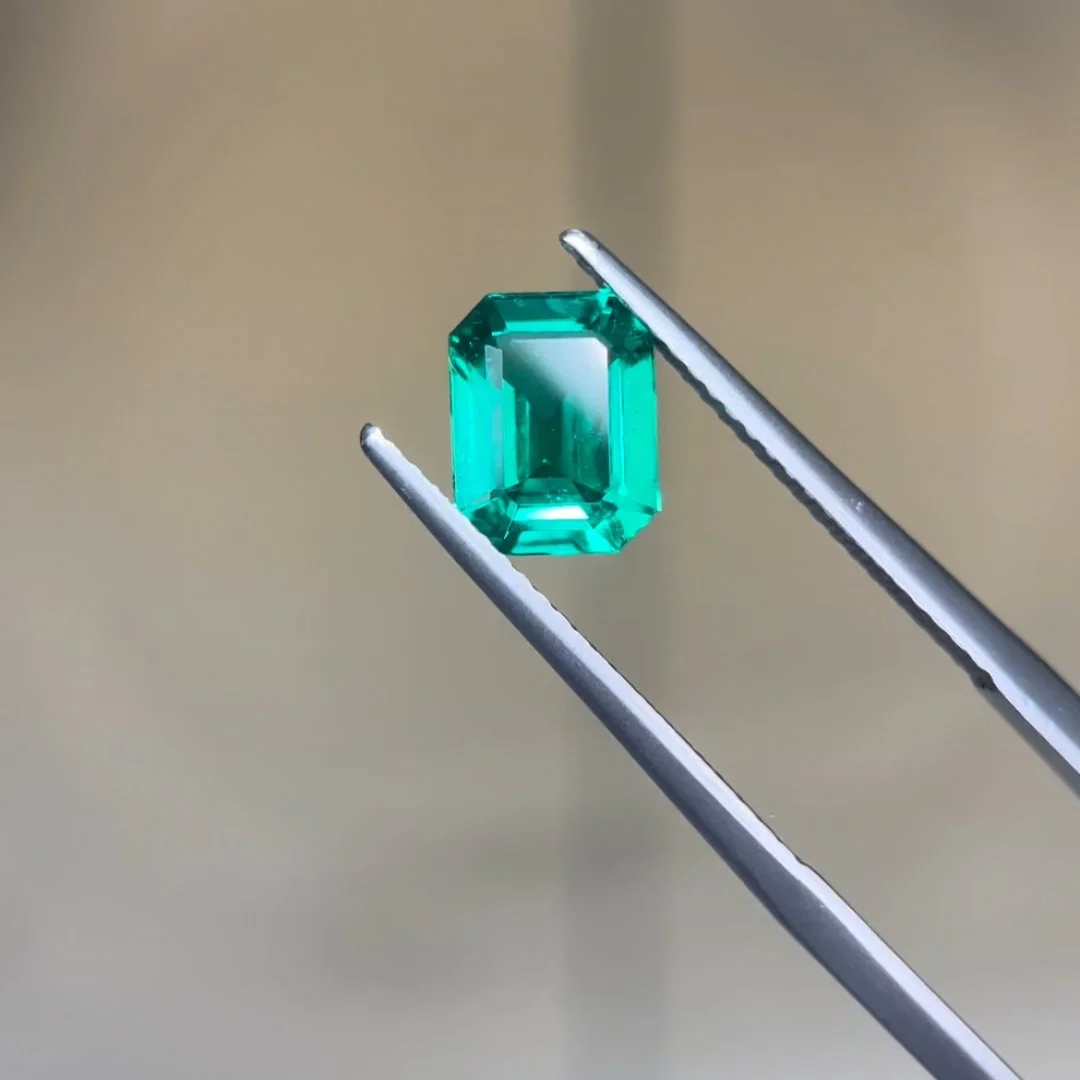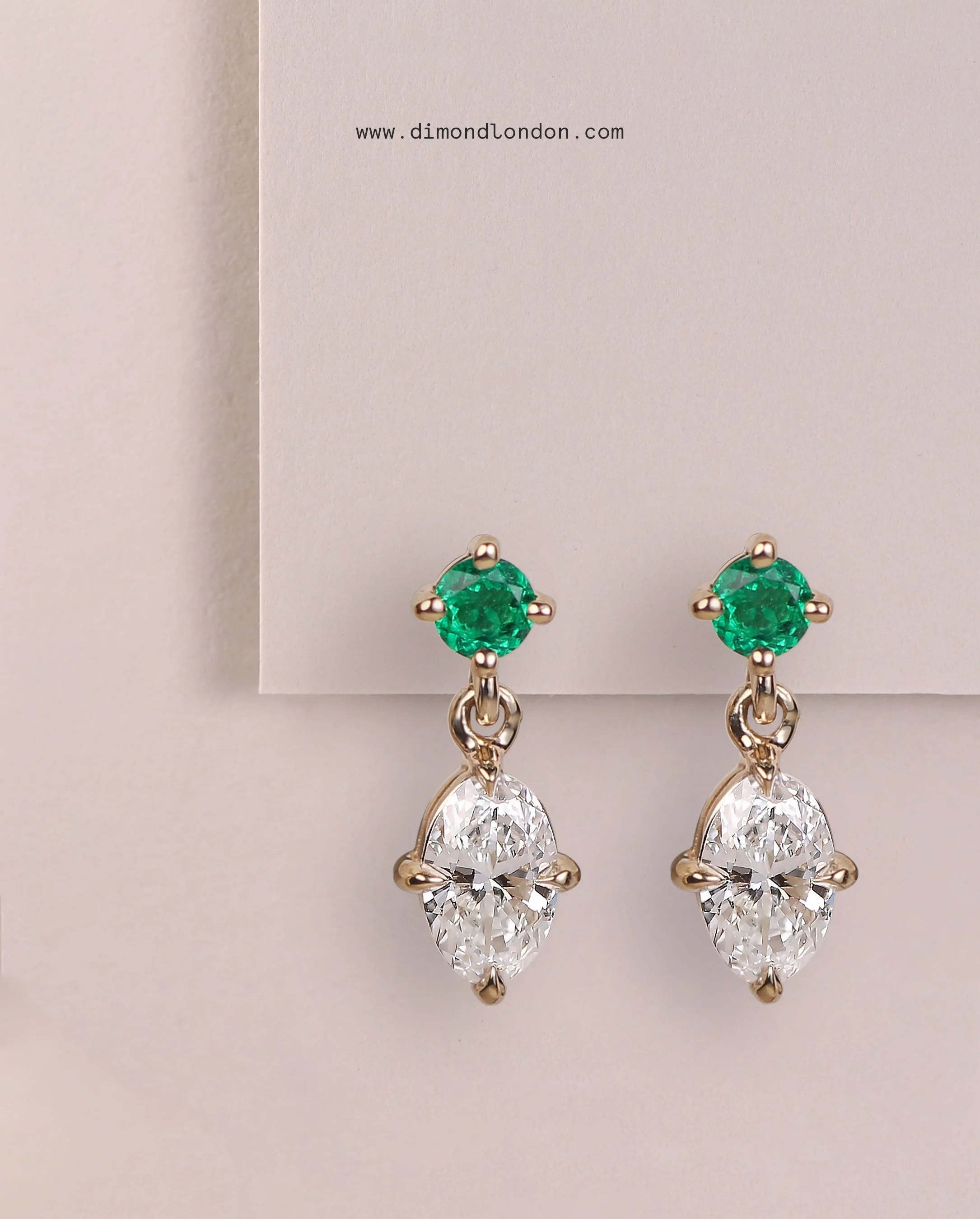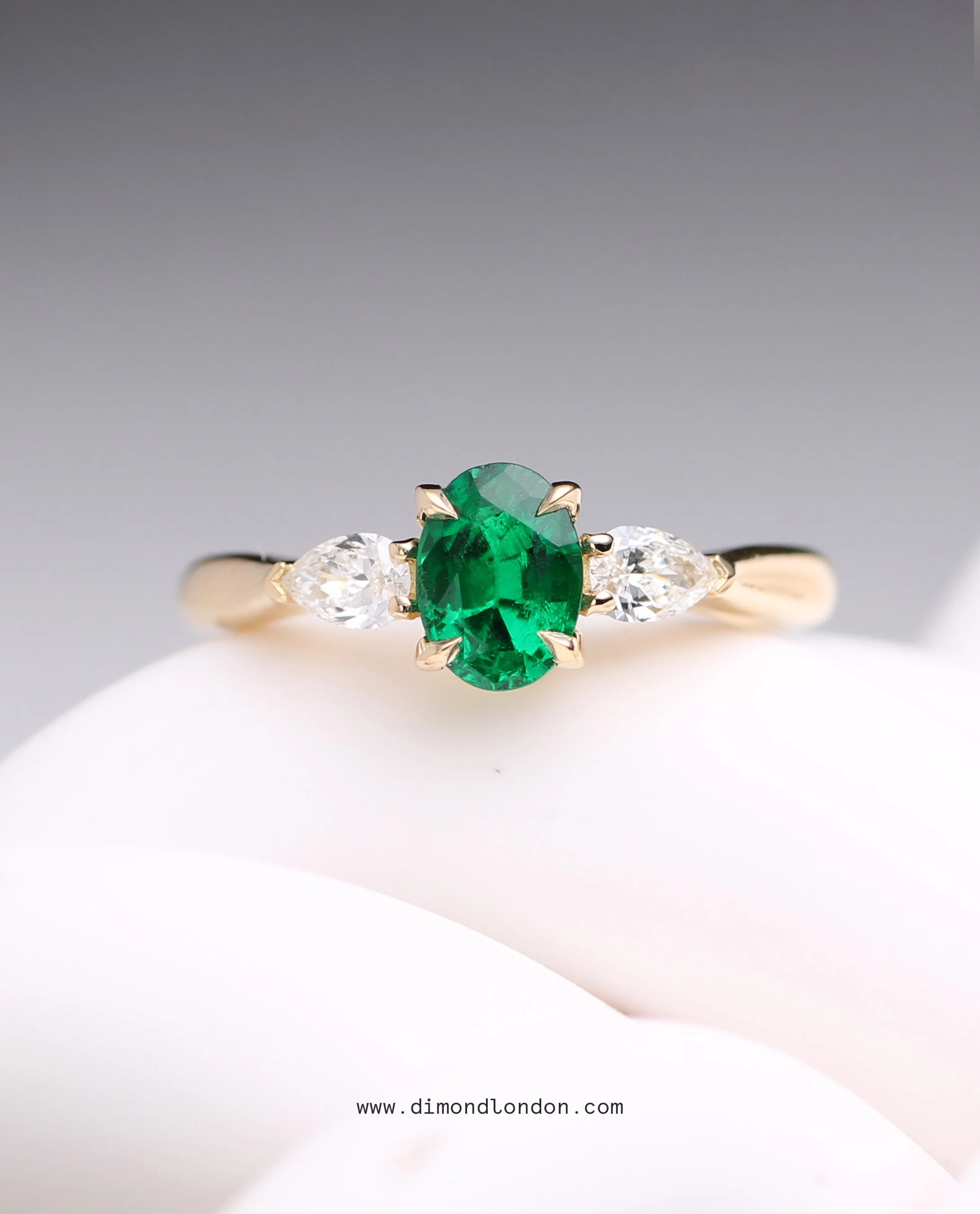AN EXPERT’S GUIDE TO EMERALDS
What is an emerald?
An emerald is a precious gemstone known for its vivid green colour. It belongs to the beryl mineral family. Emeralds often contain inclusions known as ‘jardin’, which are natural formations within the gemstone and can resemble mossy or fern-like patterns.
Why are emeralds green?
Emeralds get their unique green colour from trace amounts of chromium or vanadium present during formation in the Earth's crust. This characteristic hue ranges from deep forest greens to vibrant shades, influenced by element concentration, impurities, and crystal structure. The mesmerising green distinguishes emeralds and enhances their desirability in the gemstone market.
Where are emeralds found?
Emeralds come in various types, each distinguished by its origin and quality. Colombian emeralds, renowned for their exceptional colour and clarity, are among the most prized in the world. The Muzo mine, located in the Boyacá region of Colombia, is one of the world's most famous emerald mines. It has produced some of the largest and most valuable emeralds in history, including the renowned Muzo Emerald.
Emeralds can also be found in Zambia, Brazil, and Afghanistan. Each region produces emeralds with unique characteristics, from the bright green hues of Colombian stones to the deep, bluish undertones of a Zambian emerald.
History of emeralds
The history of emeralds is rich and varied, spanning centuries and cultures. Ancient civilisations, including Egypt and Greece, valued emeralds for their associations with fertility, rebirth, and spiritual healing. Cleopatra herself even admired the green colour of emeralds.
During the Spanish conquest of the Americas, emeralds mined in Colombia became highly prized by European royalty.
In the Art Deco era, spanning from the 1920s to the 1930s, emeralds continued to captivate and inspire jewellery designers. The geometric shapes, bold colours, and characteristics of Art Deco design provided the perfect backdrop for showcasing the vivid green hues of emeralds.
Evaluating the quality and value of an emerald
As experts, when assessing the quality of emeralds we consider several factors, including colour, clarity, cut, and carat weight – similar to the four C’s of diamonds. Colour is the most crucial determinant of an emerald's value, with intense, evenly distributed greens commanding the highest prices. Clarity refers to the presence of inclusions within the stone, with fewer inclusions indicating higher clarity grades. The cut of an emerald also plays a vital role in its beauty and brilliance, while carat weight determines its size.
The world’s most expensive emerald
The Rockefeller Emerald, weighing 18.04 carats with a mesmerising deep green hue, set a new world record for the highest price ever paid for an emerald at auction. In 2017, it sold for over $5.5 million (USD) at Christie's in New York. This exceptional gemstone's rarity, size, and exquisite colour contributed to its extraordinary value, making it one of the most sought-after emeralds in the world.
Care and maintenance of emeralds
Proper care and maintenance is essential for preserving the beauty and integrity of emeralds. Due to their relative softness compared to other gemstones, emeralds require gentle handling to prevent scratches and chips. Avoid exposing emeralds to harsh chemicals or ultrasonic cleaners, as these can damage the stone's surface. Instead, clean emeralds with mild soap and warm water, using a soft brush to gently remove any dirt or debris.
Emeralds continue to captivate us with their timeless beauty and rich history. For over 60 years, we have admired these gemstones, incorporating them into our Art Deco-inspired bespoke creations. As we continue this journey, we are committed to crafting fine jewellery pieces that will be cherished for generations.




